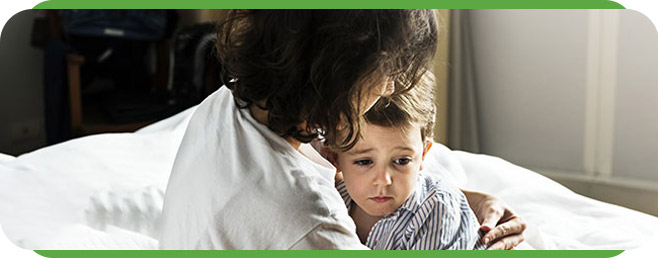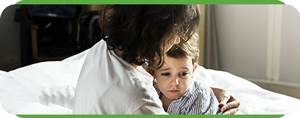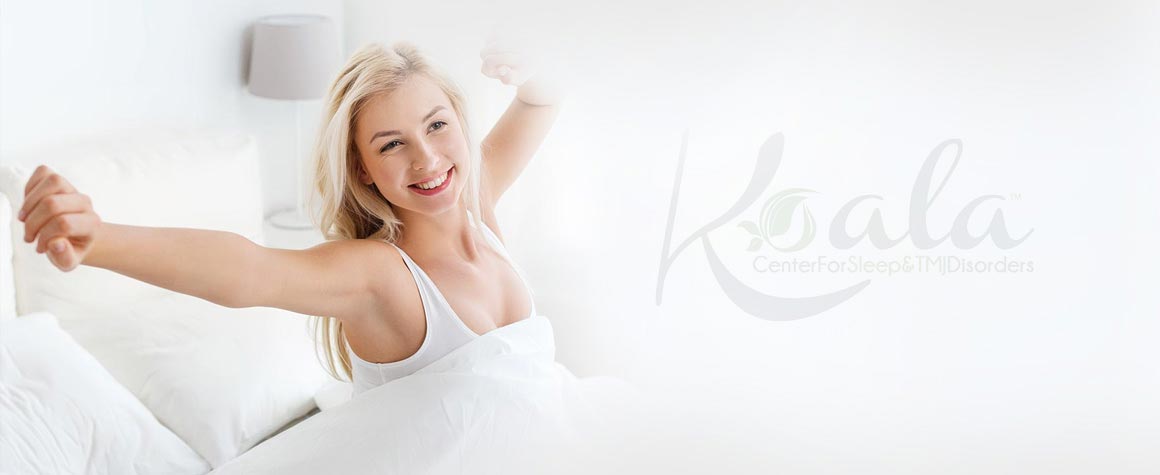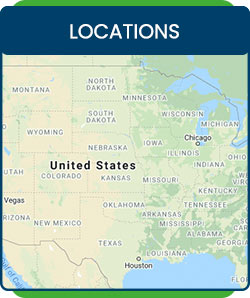Nightmares or Sweet Dreams?


Table of Contents:
Sleep Terrors (Night Terrors)
Nightmare Disorder
Assessment and Treatment
Many of us have experienced a nightmare at some point in our lifetime. These are dreams that are perceived as being negative and may cause you to wake up and feel fearful or anxious. Nightmare occurrences involve intense dreaming and may create sadness, irritation, and other negative feelings. Nightmares among children are common and generally do not interfere drastically with sleep quality. However, there are two other conditions, sleep terrors (night terrors) and nightmare disorders, that have been found to coexist with childhood sleep disorders according to a study done at the Cincinnati Children’s Hospital.
Nightmares occur mostly in children between the ages of 3 and 6. Many children start to experience much fewer nightmares after reaching the age of 10. Teenage girls usually have more nightmares compared to boy peers. Roughly half of young children experience a nightmare that caused them to wake up their parents. Yet when children are consistently being awakened due to nightmares, there may be the negative effect of sleep deprivation and one of the signs of “Nightmare Disorder.”
Sweet dreams can be encouraged by following some simple nighttime routines and providing a calm, relaxing environment free from technology gadgets as well as minimal light an hour or so before bedtime. Although nightmares rarely can be prevented, many look to implement good sleep hygiene habits to create quality time prior to sleep and assist in falling asleep and staying asleep. Regular sleep times and wake-up schedules work with the circadian rhythm which is the brain’s natural wake/sleep cycle patterns. Sound sleep helps the child be re energized and ready for a day of adventures and learning.
Sleep terrors and nightmares have some common characteristics yet distinct differences. Sleep terrors are a parasomnia and usually include arousal but not being fully awake, along with agitation, large pupils, sweating, and increased blood pressure. Usually the child screams and appears terrified for several minutes until they eventually relax and return to sleep. Sleep terrors usually take place during the N3 stage of non-REM sleep, occurring in the first third to half of sleep, and can be triggered by a sleep disorder, most notably, obstructive sleep apnea. The terrors may be combined with sleepwalking or other parasomnias.
The child typically does not remember the episode or only has a vague memory of it. It is important to note with sleep terrors the child may have a sleep arousal but may remain unawake during the episode. It is recommended not to force the child to wake up; just remain calm, help them relax, and return to sleep. When sleep disturbances begin affecting daytime mental and physical functions and disrupts sleep quality for other household members, consulting a medical professional for evaluation and treatment is recommended.
Mayo Clinic states that sleep terrors sometimes can be triggered by underlying conditions that interfere with sleep, such as:
– Sleep-Related Breathing Disorders – a group of disorders that include abnormal breathing patterns during sleep, the most common of which is obstructive sleep apnea (OSA)
– Restless leg(s) syndrome
– Some medications
– Mood disorders, such as depression and anxiety
Having occasional nightmares does not signify the existence of a “nightmare disorder.” One of the main signs of “nightmare disorder” is the frequent sleep disturbances and effects of sleep disorder. The condition known as nightmare disorder is classified as a nocturnal parasomnia. The primary sign of nightmare disorder is that the child will begin to lack the ability to maintain adequate sleep. According to the Diagnostic and Statistical Manual of Mental Disorders, Fifth Edition (DSM-5), nightmare disorder is explained as recurring awakenings from sleep. These awakenings must be sufficient to threaten the “survival, safety or physical integrity” to be considered a parasomnia.
Parents concerned if their child may have a nightmare disorder or be experiencing sleep terrors will want to evaluate the child’s sleeping patterns. Often these individuals are unable to get back to sleep following a nightmare. Kids with sleep disorders or OSA can trigger sleep terrors. Consider keeping a log to document when nightmares and sleep terrors occur. A medical dental clinic may be able to detect potential underlying causes and provide treatment to reduce the effects of sleep deprivation.
Those who may be experiencing nightmare disorder or frequent sleep terrors may undergo an overnight sleep study at a facility. Home sleep tests are also available, depending on the recommendations of medical professionals. Many people find that therapy or counseling helps overcome these problems. Therapy is often very effective if the nightmares seem to be triggered by a specific traumatic event. Dental oral appliances have been found effective in treating sleep-related breathing disorders in children with OSA, which may reduce triggering sleep terrors.
Parasomnia occurs in roughly 10% of the overall population; however, it is much more prevalent in children. Parents of children who experience frequent nightmares or sleep terrors are encouraged to talk with our professional staff if they are confused about whether their child may truly have a sleep disorder. As a medical dental clinic, the Koala® Center For Sleep & TMJ Disorders staff utilizes an integrated healthcare approach with other medical professional teams to treat sleep disorders that can hinder the ability to enjoy a good night and a great day! Contact us today at koalasleepcenters.com to find a location near you.

Additional Services You May Need
▸ KoalaKIDZzz®
▸ Sleep Apnea
▸ Snoring
▸ TMJ Disorder
▸ Fatigue
▸ Sleep Disorders
▸ Weight Loss
▸ CPAP Alternative
▸ Oral Appliances




